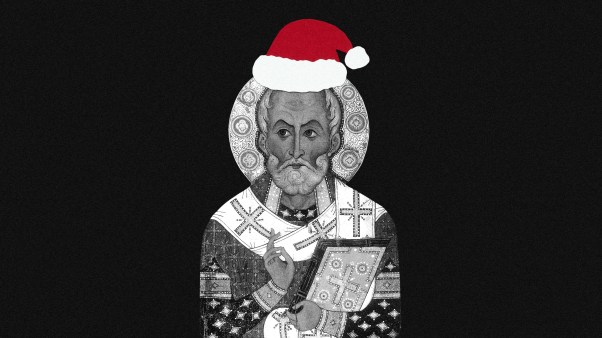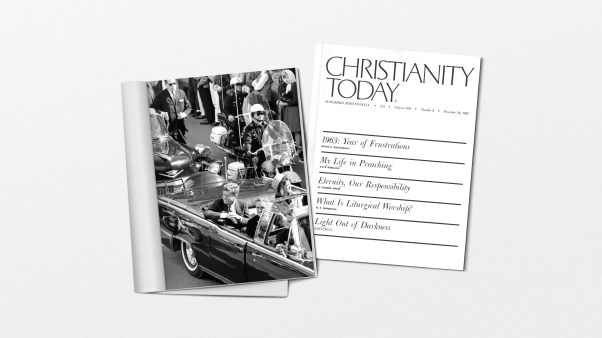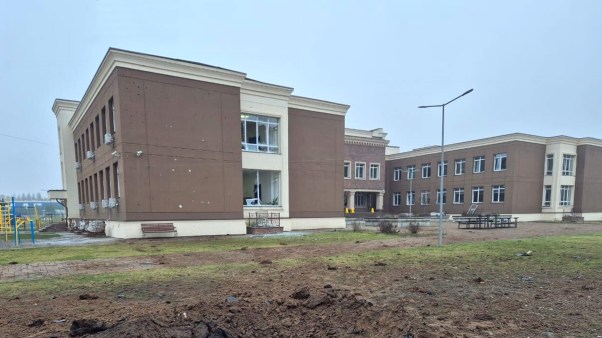A landmark legal case, designed to test the constitutionality of government aid to church-related colleges, is moving into an appeals court in Maryland. A circuit judge ruled last month that such aid does not violate the U. S. Constitution. The case will probably end up in the U. S. Supreme Court.
Judge O. Bowie Duckett of Anne Arundel Circuit Court declared that state appropriations to two Protestant and two Roman Catholic colleges in Maryland serve a purely secular purpose. He said that it was not the original legislative purpose—and it is not the primary effect—of the grants to advance or inhibit religion.
In February, the Horace Mann League of America, a national organization of public school educators which originated the test suit, withdrew from the case because of lack of legal standing. A group of twelve Maryland citizens remained in the case.
Defendants in the suit are Hood College, affiliated with the United Church of Christ: Western Maryland College, Methodist; and two Roman Catholic colleges, Notre Dame of Baltimore and St. Joseph’s. All are four-year liberal arts colleges.
Duckett held that the most pertinent test of validity of the grants was that used by the U.S. Supreme Court in the school prayer case. This test, he said, was as follows:
“What are the purpose and the primary effect of the enactment? If either is the advancement or inhibition of religion, then the enactment exceeds the scope of legislative power as circumscribed by the Constitution. That is to say that to withstand the strictures of the establishment clause there must be a secular legislative purpose and a primary effect that neither advances nor inhibits religion.”
The judge said it “seems crystal clear that the Maryland legislature was in no way concerned with religion in making the appropriations.” In the “much more difficult” question of primary effect he concluded that while the objectives of the founders of the two Catholic colleges may have been to make religion primary, “permeating all study, thereby making education secondary … I do not find that they exist at this time.”
Gainer E. Bryan, Jr., editor of the Maryland Baplist, predicts that the outcome of the case will have implications for broader aspects of government aid to religious institutions.
Honoring An Alumnus
Construction is under way on a $1,800,000 Science-Learning Center at the Evangelical Covenant Church’s North Park College in Chicago. Key feature of the center will be a seven-story classroom building to be named in honor of Dr. Paul Carlson, slain last November by Congolese rebels. Carlson was a 1949 graduate of the school and a medical missionary of the Evangelical Covenant Church.
The center will be located along the north branch of the Chicago River, which intersects the campus. Also under construction on the campus is a $1,000,000 women’s residence hall and an $850,000 student center.
North Park College became a four-year liberal arts college in 1956 after several decades as a junior college. The first senior class was graduated in 1960. Nine months later the college was accredited by the North Central Association.
Missions On The Academic Frontier
The late Ken Strachan spent the last year of his life in Pasadena, California. During that time be lectured at Fuller Theological Seminary, implanting a zeal for missionary work upon faculty as well as students. “He had an almost charismatic effect upon us.’ says one seminary staff member.
In memory of Strachan, Fuller hopes to establish a graduate School of World Mission, and the announcement of the plans last month prompted Fuller students to circulate a petition asking that the school be named for Strachan.
The school will be designed to prepare missionaries and evangelists, to give all students an understanding of the missionary nature of the Church, to provide for an international exchange of missionary leaders, and to foster missionary research. A campus expansion is envisioned, and Fuller already has taken options on additional property. A pilot program is scheduled to begin this fall.
Strachan himself had a part in planning the school prior to his death on February 24. In setting up the academic framework. Fuller also has the help of a twelve-member national steering committee which includes several well-known missionary leaders.
Strachan was general director of the Latin America Mission, founded by his father, and was credited with having developed the evangelism-in-depth concept.
Staying Put
Trustees of Taylor University are scrapping plans to move their campus from Upland. Indiana, to a site near Fort Wayne. Instead, the Upland campus will be expanded and modernized. The property in Fort Wayne will be retained, according to a university announcement, “for future long-range development.”
The announcement said the action of the trustees was precipitated by the failure of an industrial school known as Indiana Northern University to meet financial obligations under which it proposed to purchase the Upland campus.
Mr. Basketball
He is the new Mr. Basketball to sports fans around the world, but to fellow students at Princeton University he is known as well for his Christian character.
Bill Bradley, the six-foot-five-inch forward who was on virtually everyone’s All-America team this year, climaxed his basketball career last month by leading Princeton to the national collegiate semifinals. He was voted the most valuable player in the tournament.
Bradley has been awarded a Rhodes scholarship and plans to spend the next two years at Oxford. Then he hopes to enter law school. He has rejected offers to play professional basketball.
A Presbyterian, Bradley said his greatest thrill in the 1964 Olympics was in being able to meet Christians from other nations. But he met non-Christians, too, and for one of them, a Russian track star, he had a New Testament.
Bradley grew up in Crystal City, Missouri, and won nationwide attention as a high school basketball player. He received offers of numerous athletic scholarships from colleges.
Christus House
Some time before the Lutheran Student Association at the State University of Iowa presided over its own dissolution several years ago, Lutherans on campus had begun searching for an alternative to the weekly-program approach to student work.
One path they explored led them to Church Street in Iowa City, where during the 1961–62 school year they founded Christus House. At present thirty-five students—Lutherans and non-Lutherans—live, worship, and study there.
Members deprecate the “monastery” label, but life at Christus House means life together. “The moment you think of any of us individually, you’re off the track,” a former resident chaplain said once.
The two focal points are “worship and study, both of which are explicitly Christian in content,” says Duane Addison, campus pastor and director of the community. “The members covenant with one another to be responsible for the corporate life of the community and to do certain things together,” he adds.
To ensure that the covenant is not merely agreed to and forgotten, one of its rules requires a regular review of the members’ performance of the other points.
Tensions sometimes arise. “These are greatest at examination times and other pressure periods and are only natural” in such a community, Addison says. “Yet … such crises can by the working of the Holy Spirit be moments when the community is truly redemptive.”
The Iowa State venture was structurally modeled on the ecumenical (and controversial) “Austin experiment” at the University of Texas; theologically, it is in the “classical Lutheran tradition,” says Addison.
Similar groups have been started at several other state universities, and some observers see a growing Protestant communal movement in America. While differing widely in form, many of the communities would echo the words of Bonhoeffer: “Not cloistered seclusion, but inward concentration in order to give service to others, is the aim.”
One example cited is the ecumenical Taizé monastic community in France, which may found a similar community in America. A related phenomenon is the Protestant lay retreat centers that have grown up in the last two decades. And in Washington, D. C., there is the. “Covenant Community,” a handful of young people from the ecumenical Church of the Saviour who renovated a condemned house in the slums, moved in, got acquainted with their neighbors, listened to their needs, and then planned a mission around what they had heard.
At Iowa State, Pastor Addison says that “problems remain.” But he believes Christus House is a “valid and significant way of fulfilling the Christian mission in today’s university.”
GEORGE WILLIAMS
Biola Expansion
Construction of a $900.000 women’s residence hall is under way at the La Mirada, California, campus of Biola College. Officials of the non-denominational Christian institution are hoping for a September completion date to accommodate 300 additional women students for the fall term.
The new three-story facility will have a chapel and a spacious lounge in addition to dormitory rooms and several kitchenette units. It will be completely air-conditioned.
The five Biola schools, including one located on a campus in Phoenix. Arizona, have a total enrollment of about 1,400 students this year, a record high.










